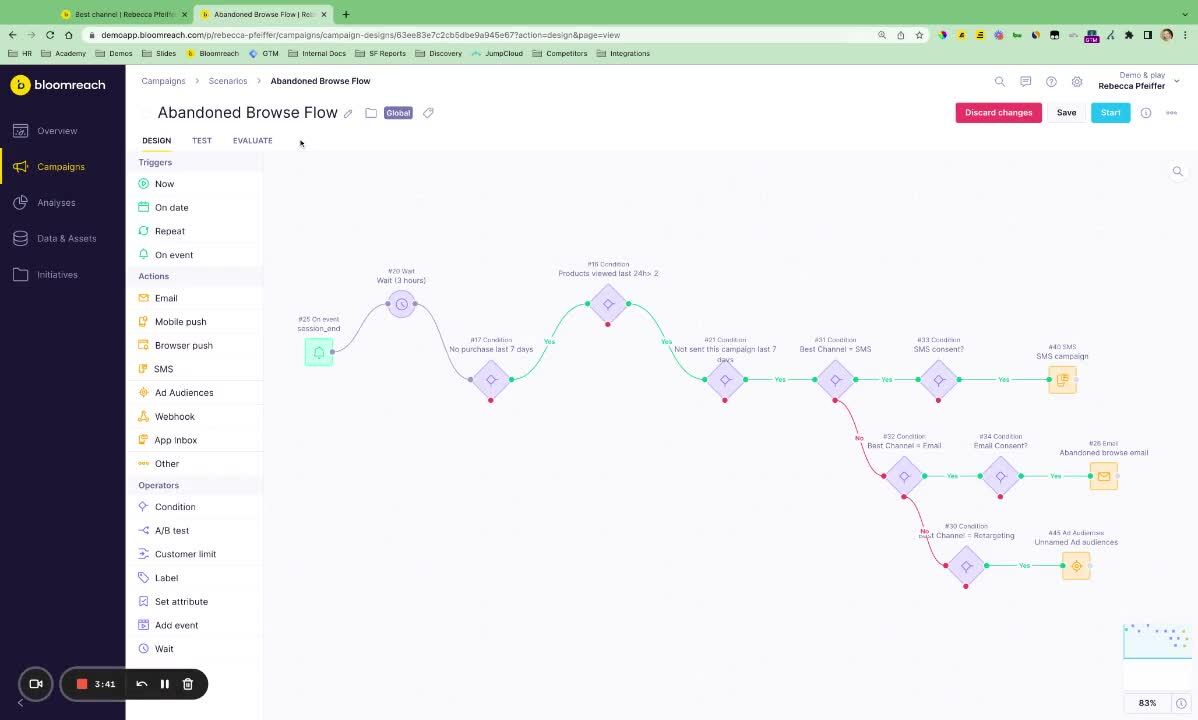So in this video, I want to talk about how with the
power of the customer data engine. Bloomreach is able to input any data point from any
of your data sources into its advanced machine
learning algorithms to accurately predict your customer's
actions.
And the best part is that these predictions will continue
to learn and update in real time.
As more data enters the platform,
Bloom reach offers a handful of out of the box
prediction templates such as purchase
likelihood optimal send time prediction
and even a custom prediction template that can
be used for creating a prediction specifically
tailored to your company's needs.
An example of this would be the best channel
prediction
which is able to identify the channel
which has the highest probability of leading to
the desired result. This could be clicks,
conversions, subscriptions
or any other custom metric. Here
we just have it set as purchase.
This will allow you to choose the right channel for each customer
maximizing the effectiveness of your campaigns.
It's also good to note that because these predictions
live on the customer profile level, they can
be used across the tool in segmentation
reporting recommendations.
Um and more. So let's see what these predictions
look like in action.
So we're looking here at our scenario builder,
uh just the typical abandoned browse
flow. So you can see it's triggered on when
somebody ends their session, it waits
a few hours, make sure that the customer
has not purchased recently, but
they have viewed items in the last 24
hours.
They will not send this campaign in the last week,
but here is where the predictions come
into play.
So I can drag and drop condition modules
wherever I need them
in the scenario, as you can see here.
And when you open up the condition modules,
they can be based on a customer attribute
as well as a customer action. In this
case, we'll do attribute
when I click this drop down, it shows
me everything from the customer profile, including
those predictions. So I'll pull in best
channel and set this one to S MS.
So they'll go down the yes branch
here. We'll make sure that they have given
consent for S MS and then we'll send them an S MS
message.
If that's not the river channel, we'll continue down
the no branch and we'll send them
email if that is their preferred channel
and they've consented.
And then last case scenario,
if they are not preferring email or
S MS, we'll send them to an ad audience for
rearing. Now, once that's all set, we
can go into the content itself and see how it's personalized
with the product data. So the Mackie
graphic T shirt,
if we head into the email, it'll be similar,
go ahead and go to the preview
and we can see here all of those products
uh and the product information like price and title
that the person was previously viewing.
So taking all of this into consideration within
a single flow, each recipient will be sent
messaging the way that is most preferable
to them based on this prediction.
And from a decision making standpoint, there's less
guessing and users are optimizing
their marketing spend.



